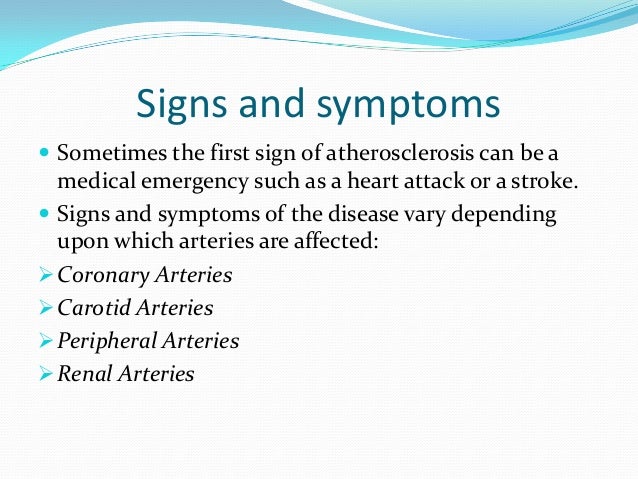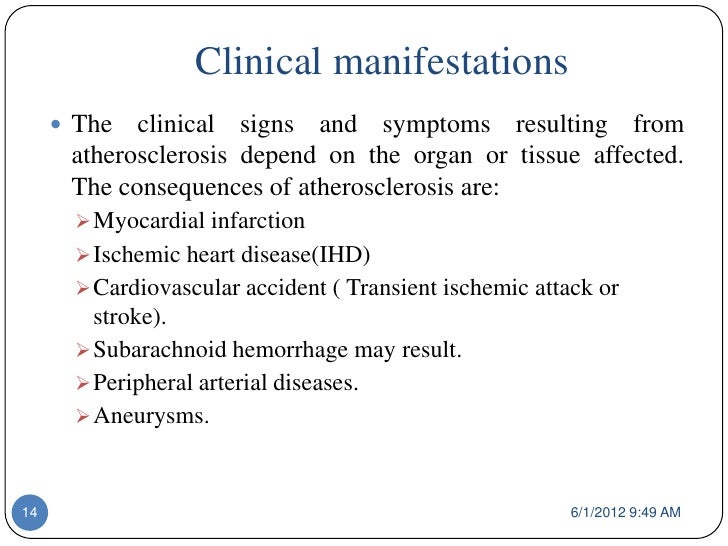Healthy eating is essential for preventing or treating further cases of atherosclerosis. While there are many elements to healthy eating, atherosclerosis-specific diets should contain low levels of saturated fat, no trans fat, a higher consumption of fruits and vegetables and fibers, as well as a moderate intake of alcohol. Further, if an individual has been diagnosed with hypertension, their doctor may recommend Dietary Approaches to Stop Hypertension (DASH). This diet focuses on the consumption of fruits, vegetables and whole grains. Conversely, it suggests avoiding foods high in fat, cholesterol and sodium.
Other important aspects to healthy living, especially in regards to treating atherosclerosis, is physical activity and refraining from smoking. At least thirty minutes of aerobic exercise each day can lower risk factors of atherosclerosis such as LDL cholesterol, high blood pressure, and excess weight.
Further, beyond diet and exercise, it is important to refrain from smoking. Smoking damages blood vessels and can increase risk for this disease. Quitting smoking and avoiding second hand smoke can lower an individual's risk of forming blood clots and help reverse heart and blood vessel damage immediately.
 If atherosclerosis has progressed significantly, more immediate or extreme means of treatment may be necessary. Often times drugs are prescribed if someone has coronary heart disease, peripheral arterial disease, or high LDL levels. Medication can also be prescribed to help lower blood pressure and blood sugar levels, or prevent blood clots and inflammation. Even still, there are quicker--yet more invasive--means of treating severe buildup of plaque in the arteries. For example, Percutaneous coronary intervention (PCI), or coronary angioplasty, is a procedure that opens a blocked coronary artery. This procedure allows better blood-flow to the heart, preventing a heart attack. Occasionally, a stent is placed in the artery for long-term effect. Another type of surgical intervention includes coronary artery bypass grafting (CABG). This surgery will form a bypass that will go around narrowed coronary arteries by using arteries from other areas of the body. Again, this allows for better blood flow, and hence better oxygen supply to the heart. Similar approaches are used in arteries leading to the brain as well as peripheral arteries.
If atherosclerosis has progressed significantly, more immediate or extreme means of treatment may be necessary. Often times drugs are prescribed if someone has coronary heart disease, peripheral arterial disease, or high LDL levels. Medication can also be prescribed to help lower blood pressure and blood sugar levels, or prevent blood clots and inflammation. Even still, there are quicker--yet more invasive--means of treating severe buildup of plaque in the arteries. For example, Percutaneous coronary intervention (PCI), or coronary angioplasty, is a procedure that opens a blocked coronary artery. This procedure allows better blood-flow to the heart, preventing a heart attack. Occasionally, a stent is placed in the artery for long-term effect. Another type of surgical intervention includes coronary artery bypass grafting (CABG). This surgery will form a bypass that will go around narrowed coronary arteries by using arteries from other areas of the body. Again, this allows for better blood flow, and hence better oxygen supply to the heart. Similar approaches are used in arteries leading to the brain as well as peripheral arteries.Treatment for atherosclerosis can be difficult and may take time. However, these methods can improve endothelial function, reduce inflammation, prevent blood clotting and decrease risk for further plaque build-up, overall decreasing chances for fatalities.


http://www.nhlbi.nih.gov/health/health-topics/topics/atherosclerosis/treatment
http://www.merckmanuals.com/professional/cardiovascular-disorders/arteriosclerosis/atherosclerosis





